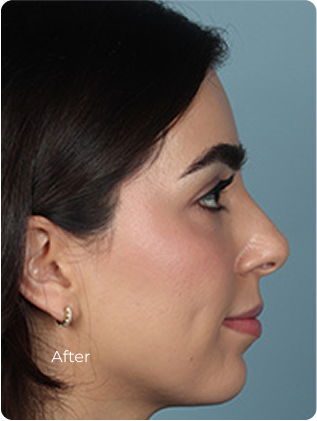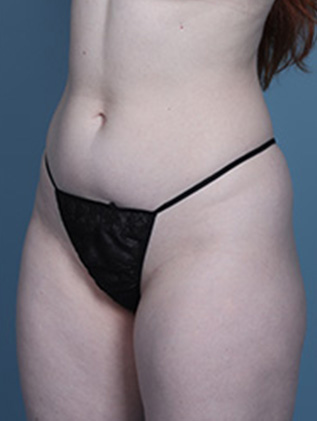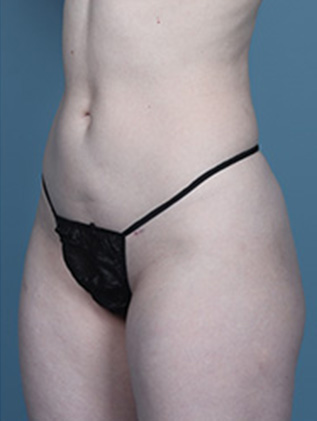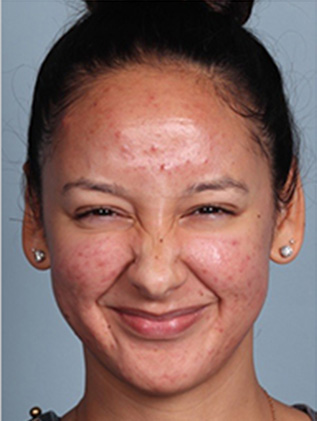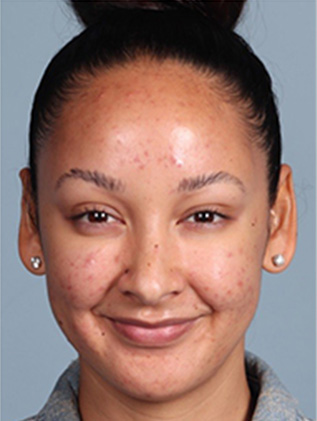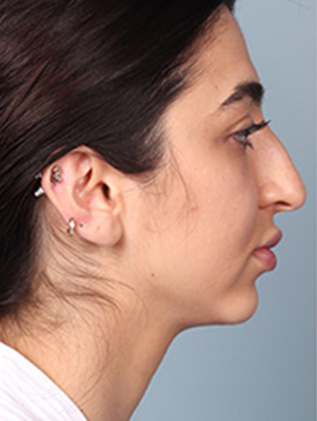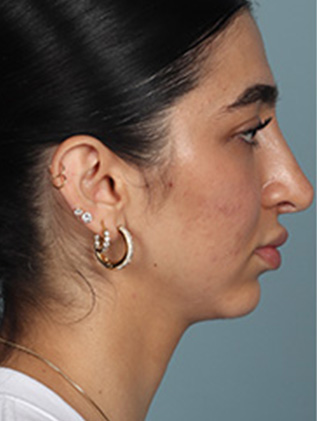By Dr. Luis Macias
The trends in beauty are never constant, yet the timeless desire to look and feel beautiful is. Over the decades, advancements in aesthetic treatments have transformed the industry, with non-invasive procedures experiencing a significant rise in popularity in recent years. The influence of social media and the increasing demand for subtle, natural-looking results largely drive this shift. Additionally, the advancements in non-invasive facial rejuvenation techniques now offer outcomes that rival traditional surgical procedures, making them a preferred choice for many.
In this article, we’ll explore the growing trend of dissolving fillers. We’ll also discuss the rise of innovative treatments like PRP (Platelet-Rich Plasma) and Sculptra. Each treatment’s benefits and limitations will be examined. Additionally, you’ll gain insights into the best times of year to undergo these interventions. Cooler months might be ideal for healing, and we’ll explain why.
Dissolving Fillers: how does it work?
Hyaluronic acid (HA) fillers are a cornerstone of facial rejuvenation in aesthetic medicine. They are commonly used to restore volume and smooth wrinkles. However, there are times when reversing these fillers becomes necessary. This could be due to overcorrection, asymmetry, or adverse reactions. In such cases, hyaluronidase is the enzyme used to dissolve the HA. Hyaluronidase functions by hydrolyzing hyaluronic acid, breaking down the polymer into smaller sugar molecules. This degradation reduces the viscosity of the HA gel, facilitating its absorption and removal by the body’s lymphatic and vascular systems. The enzyme acts rapidly, with effects typically observed within 24 to 48 hours post-injection.
The Procedure
The process of dissolving HA fillers with hyaluronidase involves several steps:
- Assessment: A thorough evaluation of the treated area is conducted to determine the appropriate dosage and injection sites for hyaluronidase.
- Preparation: The area is cleansed, and a topical anesthetic may be applied to minimize discomfort during the procedure.
- Injection: Hyaluronidase is carefully injected into the areas where the HA filler is present. The enzyme begins to break down the filler immediately.
- Monitoring: The treated area is observed for any immediate reactions. Patients are typically advised to avoid strenuous activities and excessive manipulation of the area for 24 hours post-procedure.
While hyaluronidase is effective in dissolving HA fillers, several factors must be considered:
- Natural HA Degradation: Hyaluronidase does not dissolve natural tissue. Though it can dissolve the body’s natural hyaluronic acid, it is not able to dissolve tissue.
- Allergic Reactions: Although rare, some individuals may experience allergic reactions to hyaluronidase. A patch test or thorough medical history can help assess the risk.
- Variability in Response: The effectiveness of hyaluronidase can vary based on factors such as the type and amount of filler used, as well as individual patient differences.
The rise of filler dissolving
One reason people opt for facial rejuvenation with fillers is their reversibility. These treatments don’t produce permanent results, giving individuals the flexibility to stop using them or have them dissolved if desired. In recent years, many social media influencers have shared their filler journeys. They’ve discussed why they chose to dissolve their fillers and embraced their natural look with confidence.
Another reason people may resort to dissolving fillers is a negative filler experience. Some patients in the hands of inexperienced practitioners can face catastrophic complications, such as vascular occlusion or even vision loss. Another common concern is filler migration, particularly in the lip area. The trend of overly filled faces, once widely popularized on social media, became normalized to the point of influencing many people’s perceptions of beauty.
Another area prone to complications in facial rejuvenation is the tear trough. Fillers in this area may lead to a condition known as Post-Hyaluronic Acid Recurrent Eyelid Edema (PHAREE), which causes persistent or recurrent swelling under the eyes. This can result in discomfort, an uneven appearance, and a need for further medical intervention to resolve the issue.
PHAREE occurs when hyaluronic acid fillers retain water in the tear-trough area, creating puffiness that can worsen over time. This condition not only affects the aesthetic outcome but also causes discomfort for the patient.
As the conversation around natural beauty grows, dissolving fillers has become a way for many to reclaim their authentic appearance while redefining their approach to facial rejuvenation.
Psychological Issue or Real Concern?
When it comes to complications or dissatisfaction with fillers in facial rejuvenation, the question often arises: Is it a psychological issue or a genuine physical concern? The answer lies somewhere in between, as both psychological and physical factors can play a role.
From a psychological perspective, dissatisfaction with fillers can lead to significant emotional fallout. Patients who feel their appearance has been negatively impacted may experience deflation, frustration, or even a loss of self-confidence. These feelings can be exacerbated if the individual has an underlying psychological vulnerability or unrealistic expectations about the results of facial rejuvenation treatments.
These psychological effects are often tied to real physical issues. Complications like overfilling, filler migration, or persistent swelling can make patients feel disfigured or “destroyed.” Even if a patient seems overly fixated or emotionally distressed initially, repeated complaints may point to valid concerns affecting their psychological state. Patients who did not exhibit such intense reactions before facial rejuvenation treatments might develop these feelings due to unresolved complications. This highlights the strong connection between physical outcomes and mental health.
While some concerns may arise from psychological distress, providers must carefully address both physical and emotional aspects. Compassionate communication and thorough evaluation are essential. These steps help identify the root cause and guide the best course of action, ensuring a holistic approach to facial rejuvenation care.
Implications of dissolving fillers
Hyaluronidase, a valuable tool for addressing filler complications, is often seen as a safety net for reversing unwanted results. However, dissolving fillers is not without its implications.
Research shows that hyaluronidase not only dissolves injected filler but can also impact the body’s natural hyaluronic acid. While initial effects, such as a temporary loss of skin tension, are observed, studies suggest that the natural hyaluronic acid begins to regenerate within 48 hours, restoring the skin’s normal function. Despite this, excessive or repeated use of hyaluronidase can lead to concerns about its long-term effects on natural tissues.
Fillers, while often marketed as temporary, can sometimes persist in the body, leading to potential complications over time. Patients seeking to dissolve fillers should approach the process thoughtfully, avoiding repeated dissolving procedures that could unnecessarily strain the skin and underlying tissues.
The key takeaway is the need for moderation. Overfilling or frequent adjustments increase the likelihood of requiring a dissolver, which, while effective, should not be used as a routine fix. Instead, fillers should be considered semi-permanent and applied conservatively for specific, well-proven indications. Prevention, including careful planning and precise application, is far better than relying on corrective measures. By adopting this mindset, patients and practitioners can reduce the need for hyaluronidase and achieve more satisfying, long-term results.
Can Sculptra and PRP replace fillers?
Sculptra and PRP are often considered alternatives to traditional fillers, but they work differently. Sculptra has been around for over 20 years and was initially developed for medical applications before being adapted for cosmetic use. Unlike fillers, Sculptra does not immediately add volume; instead, it stimulates the body’s natural collagen production over time. Its active ingredient, poly-L-lactic acid, has been widely used in absorbable surgical sutures.
During surgeries, it was observed that these sutures encouraged collagen and scar tissue formation in the surrounding area. This led to the innovation of using powdered poly-L-lactic acid in cosmetic injections to replicate this collagen-stimulating effect. And because it doesn’t directly add volume unlike fillers, multiple treatments are usually required to achieve noticeable volume restoration.
Benefits and limitations of Sculptra
Like any intervention, Sculptra also has its benefits and limitations, and the choice is individual, based on the client’s specific needs and expectations.
Here are some of the advantages of Sculptra:
- Longevity: Unlike hyaluronic acid (HA) fillers, which the body gradually breaks down, Sculptra stimulates collagen production, providing results that can last 2–4 years or longer. Because Sculptra is collagen, the body does not immediately try to degrade it, as collagen is a natural substance in the body, securing long-lasting results. Be well aware of who is injecting you, because the results may stick with you for years.
- Natural-Looking Results: Because it stimulates your body’s natural collagen, Sculptra can achieve subtle and gradual improvements, making the enhancement look more natural over time.
- Skin texture improvement: Skin quality, toe and texture improve through this procedure because collagen is important for radiant skin.
- Safe in Deep Areas: Sculptra is particularly effective for deep injection sites, such as temples or areas near the bone, where it builds volume and restores hollowed regions with minimal risk of complications.
Potential Drawbacks and Considerations
While it may sound appealing, Sculptra isn’t for everyone, here are some of the limitations and possible complications:
- Risk of Overcorrection: Improper use or over-injection can lead to excessive collagen stimulation, resulting in an overfilled or unnatural appearance (“big face syndrome”).
- Beading Effect: When injected near the skin’s surface or in areas like the lips or under the eyes, collagen beads can form, creating visible lumps or uneven textures. So unlike fillers, Sculptra can’t be used in all of the same places. Avoid superficial regions like the under-eyes or lips, where the risk of visible lumps is higher, or regions where there is lots of muscle movement.
- Requires Multiple Treatments: Achieving the desired effect typically involves 2–4 sessions spread over several months, making it less immediate than traditional fillers. However, unlike fillers, the results are long-lasting, and they are irreversible.
- Limited Application Areas: Sculptra works best in specific areas like the temples or the jawline but is not ideal for regions requiring precise or superficial volume correction, such as the under-eye or lip areas. The best areas are temples, cheeks, jawline, and areas requiring deep volume restoration. It’s difficult to distribute hyaluronic acid fillers over a large area, so Sculptra works best on these parts of the face.
- Gradual Results: Patients looking for instant results may find Sculptra less appealing since the effects develop over time as collagen production increases. It’s usually within a month after the first injection when the body starts to react to the tiny particles of Sculptra. Compared to gel fillers it is not really a filler, it is a biostimulator that stimulates collagen production.
- Complexity in Application: Determining whether a concern is due to volume loss or skin laxity is crucial. Misjudging this can lead to suboptimal results.
Sculptra is an excellent option for patients seeking a long-lasting and natural solution for volume loss in specific areas. Still, it must be used judiciously to avoid complications or undesirable effects. Moreover, if you have skin laxity issues, Sculptra is unlikely to provide much help. Laxity issues are best addressed through lifting procedures, as only volume loss requires refilling. Overfilling does not lift the face. While fillers and added volume can enhance surgical results, they cannot resolve laxity problems on their own.
Benefits and limitations of PRP
Platelet-rich plasma (PRP) and dermal fillers represent two distinct approaches in aesthetic medicine. PRP is a natural treatment that is retrieved from the patient’s own blood, which is processed to extract platelets rich in growth factors. PRP is a concentration of wound healing and growth factors found in your own blood that is used naturally by the body for healing. These growth factors play a significant role in tissue regeneration, collagen stimulation, and improved blood supply. PRP is primarily valued for its regenerative properties, making it ideal for improving skin quality and addressing fine lines, wrinkles, and texture irregularities.
Here are some of the benefits of using PRP for facial rejuvenation.
- Collagen Stimulation: PRP stimulates the body’s natural collagen production. This gradual and ongoing process improves skin elasticity and texture over time, resulting in a natural glowy, glass skin effect and overall youthful appearance.
- Improved Skin Quality: PRP enhances the health and appearance of the skin by promoting better blood circulation and tissue regeneration. Patients often notice a brighter, more youthful glow, as well as a softening of fine lines.
- Versatility in Treatment Areas: PRP can be used on delicate areas, such as under-eye hollows, where fillers might carry a higher risk of complications. It is also effective for treating acne scars, sun damage, and overall skin rejuvenation.
- Minimized Risk of Allergic Reactions: Since PRP is derived from the patient’s own blood, it eliminates the risk of allergic reactions or rejection, making it a safe option for individuals sensitive to synthetic products.
- Long-Term Benefits: Unlike fillers, which provide immediate volume, PRP focuses on improving the underlying structure and quality of the skin. The results develop gradually but can last longer due to the regenerative effects.
- Applications Beyond Aesthetics: PRP is also used in regenerative medicine, including hair restoration and wound healing. It is versatile and effective in stimulating tissue repair.
Pros and Cons
Like with any medical or aesthetic procedure, PRP (Platelet-Rich Plasma) comes with its own set of advantages and limitations. Proper evaluation of these factors is important before undertaking a procedure. Moreover, it will help to manage expectations and have a realistic idea of what’s achievable.
- Delayed Results: Unlike fillers, which provide instant volume and contour, PRP requires time for the collagen-stimulating effects to manifest. Patients may need multiple sessions to achieve their desired outcome.
- Subtle Changes: PRP does not add volume to the face, so it is not suitable for patients seeking immediate and noticeable correction of deep wrinkles, folds, or volume loss.
- Variability in Results: The efficacy of PRP can vary between individuals, depending on factors such as age, overall health, and the concentration of platelets in the prepared plasma.
- Maintenance Requirements: Although PRP offers long-term benefits, periodic treatments are often necessary to maintain results, particularly for skin rejuvenation.
Why Cooler Months Are Ideal for Non-Invasive Procedures
You may decide to gift yourself a younger appearance this Christmas and start the new year with confidence because the cooler months are often considered the best time to undergo facial rejuvenation treatments. Here’s why this season offers advantages for healing and maximizing results:
Minimized UV Exposure
During the winter, the sun’s intensity is lower, and people generally spend less time outdoors. This reduced UV exposure is beneficial for post-procedure care, as treatments like PRP, Sculptra, or filler dissolving can leave the skin more vulnerable to sunlight. Healing in cooler months reduces the likelihood of complications such as hyperpigmentation, ensuring that the skin recovers evenly and effectively. The same is true for surgical procedures like facelifts as well.
More Downtime for Recovery
The festive season and cooler months often mean fewer outdoor activities and social commitments, creating the perfect opportunity for uninterrupted recovery. Many procedures involve temporary redness, swelling, or bruising, and the extra time indoors allows these effects to subside without added stress. It’s an ideal time to rest, rejuvenate, and emerge looking and feeling refreshed.
Cold Weather Reduces Inflammation
Winter’s natural chill provides a soothing effect on post-procedure inflammation. Cold weather helps to minimize swelling and discomfort, promoting faster healing. This benefit complements the body’s natural recovery process, ensuring a more comfortable experience and better outcomes.
By undergoing treatments during the cooler months, you’re setting yourself up for a smoother healing journey. Why not celebrate the season of giving by investing in yourself? Start the new year with a radiant, rejuvenated appearance and renewed confidence!
In short
The rise of non-invasive facial rejuvenation techniques in 2024 reflects a growing trend toward safe and natural-looking solutions. These treatments offer effective ways to maintain a youthful appearance without invasive procedures. Options range from dissolving fillers to collagen-stimulating treatments like Sculptra. Additionally, regenerative therapies such as PRP cater to a wide variety of needs and preferences. However, each choice requires careful consideration, underscoring the importance of consulting experienced professionals.
The cooler months are an ideal time to focus on self-care. These months allow for optimal recovery and preparation for the year ahead. By understanding the benefits and limitations of each treatment and planning strategically, you can achieve lasting results. These results can enhance your confidence and overall well-being. This season, consider giving yourself the gift of a refreshed and rejuvenated appearance. Step into the new year feeling your absolute best.
Looking ahead to 2025, innovation in non-invasive treatments is expected to grow even further. Hybrid procedures that combine modalities, such as microneedling with RF technology or PRP with bio-fillers, are likely to become more popular for enhanced results. Additionally, emerging technologies like AI-guided treatment planning and next-generation skin-tightening devices will become more accessible. These advancements will offer greater precision and customization. With a continued focus on safety and efficacy, 2025 is set to bring treatments that rejuvenate while empowering patients to embrace their natural beauty.



